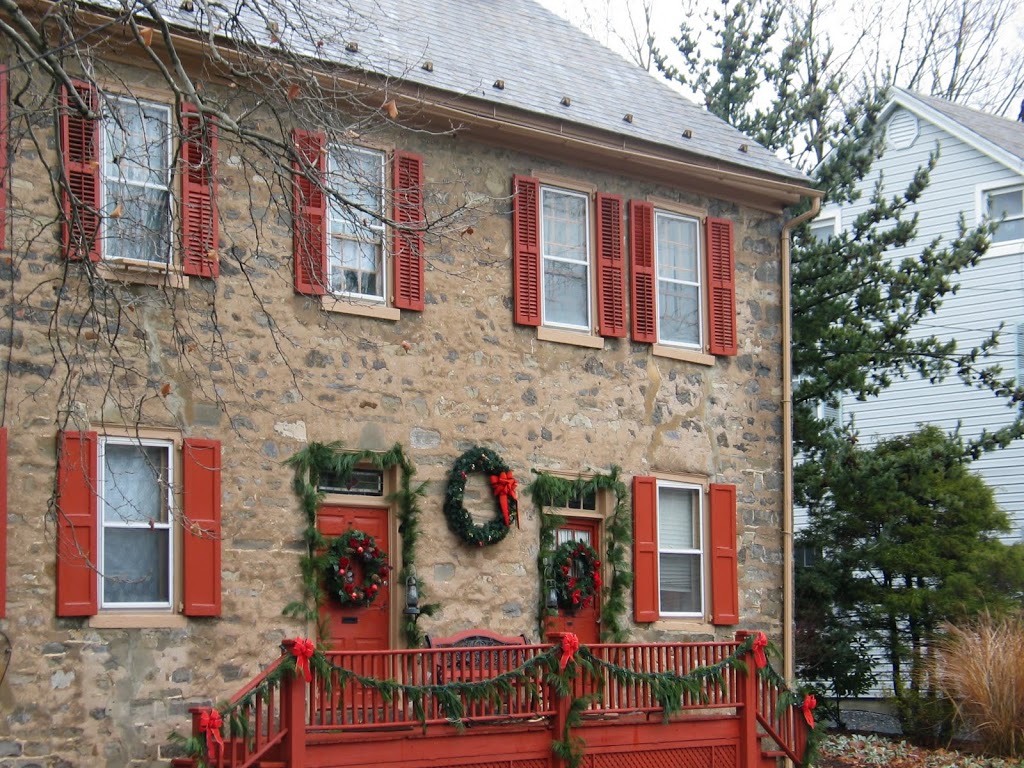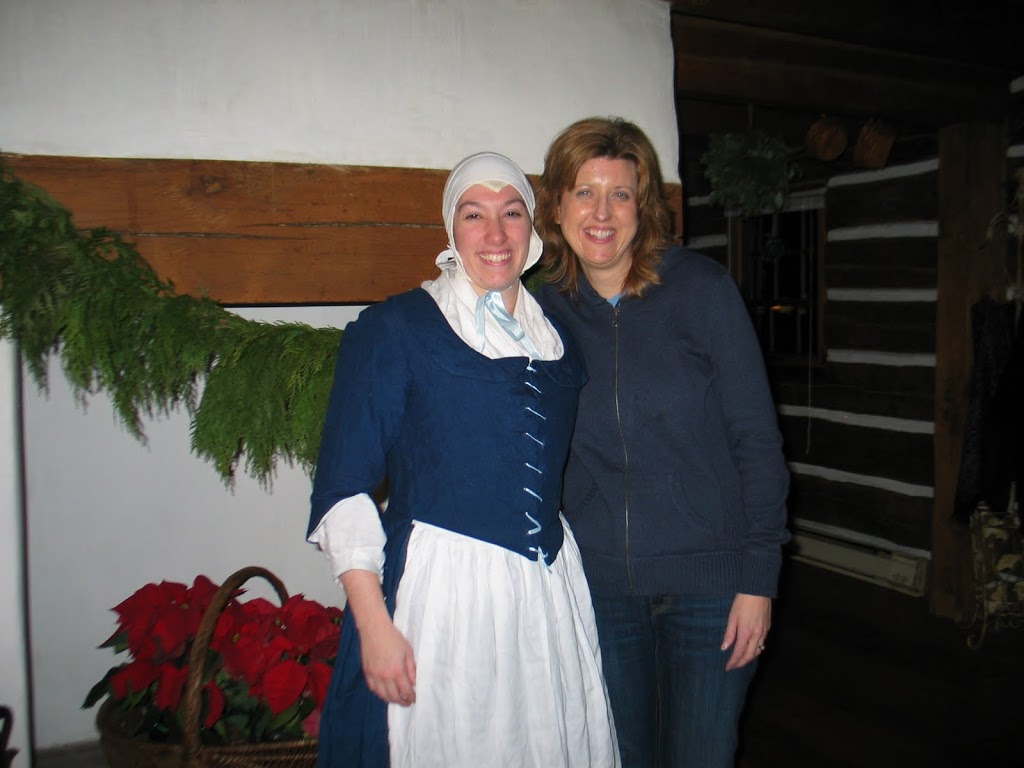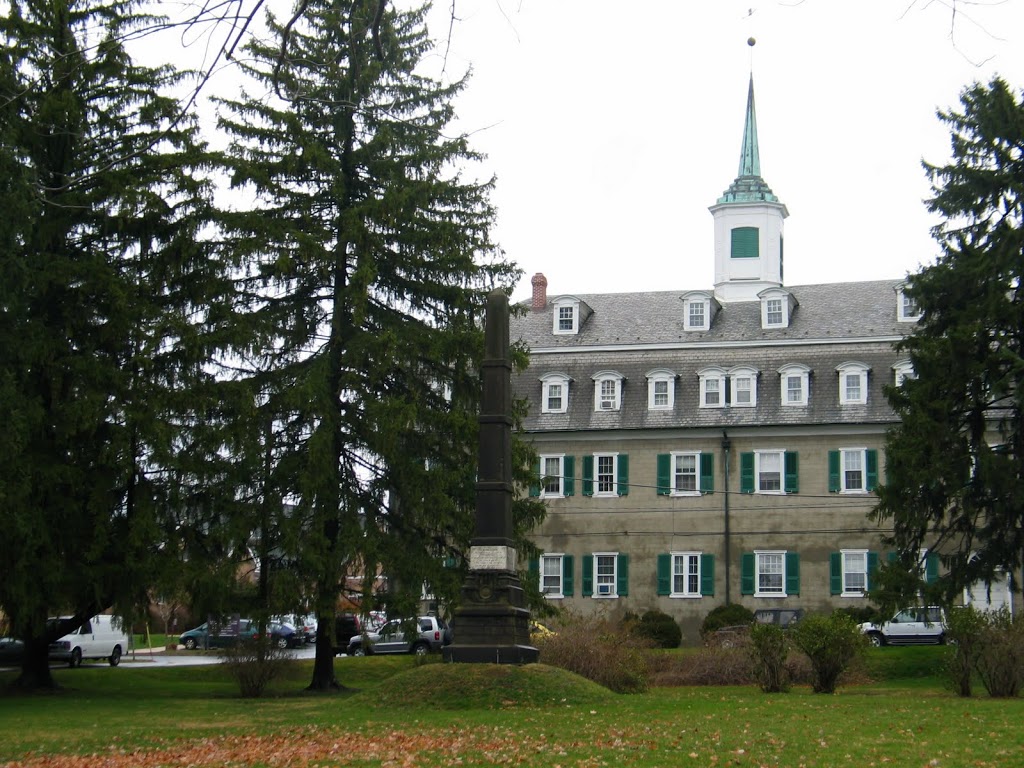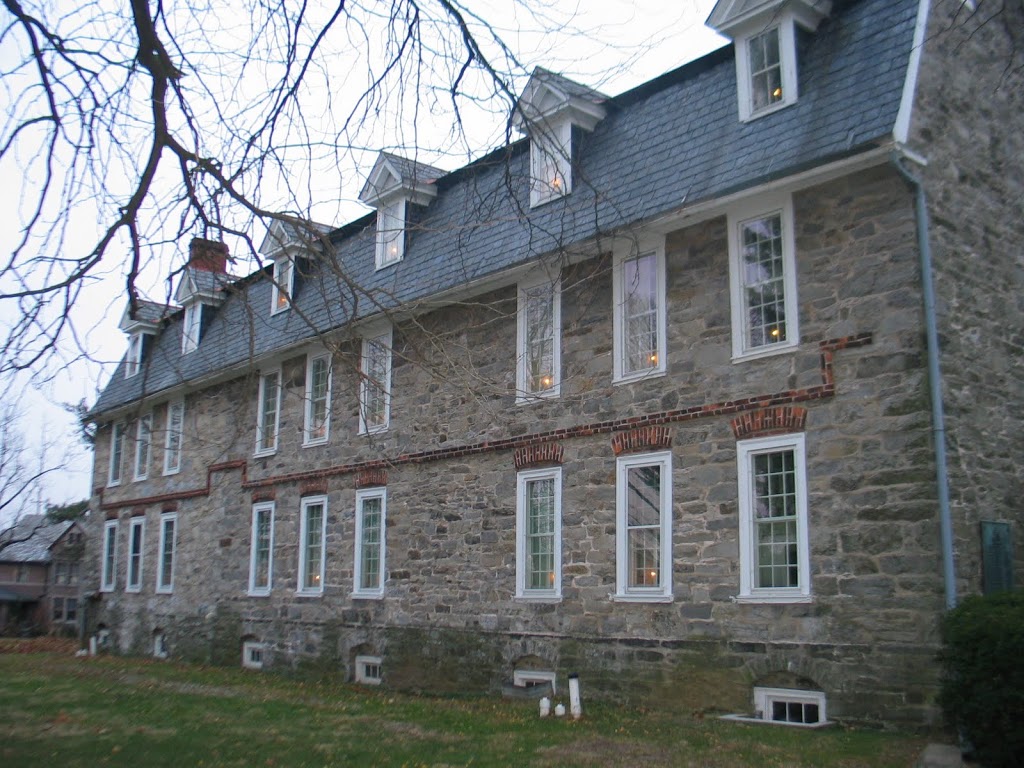During Christmas, the windows in Nazareth, Pennsylvania make the entire village glow, each one lit with a solitary candle that beckons visitors inside, out of the snow. Pine wreaths wrapped in ribbons decorate painted doors. White stars adorn wooden and stone homes alike. Twinkling lights color the evergreen that towers on Center Square.
In December 2010, I spent several days researching in this magical village for The Christmas Bride (originally titled Love Finds You in Nazareth, Pennsylvania). The citizens of Nazareth embrace Christmas with quiet charm, and in the midst of the décor and festivities, there is the constant reminder of the birth of the child who sparked this season, of the boy who lived an ocean away and almost two thousand years past in another village called Nazareth.

Pennsylvania’s Nazareth is an eclectic mixture of both old and new. Colonial and contemporary. A gray stone hall, built in 1744 by the Moravians (Unity of the Brethren), anchors the east side of town, and sprinkled throughout the village are grand Victorian residences beside smaller clapboard homes.
I spent hours in this stone building, now named the Whitefield House, as I read journals from the 1700s. This was a personal journey for me as well because my maiden name was “Beroth”. My ancestors joined the Unity of the Brethren in the 1750s. I knew very little about their history until I visited Nazareth and nearby Bethlehem. What a delight it was to find records of my ancestor Maria Beroth in these journals as well as information about my great (to the fifth) grandparent’s marriage in Bethlehem on July 29, 1758. Johann Beroth and Catharina Neumann were married by lot like the characters in my novel. They were married for fifty-eight years.
I don’t know if my great-grandparents knew each other before they married. As I read pieces of their story, I wondered if they were excited to marry or if either of them dreaded their wedding day. I—along with my father and my grandfather and my siblings— are certainly grateful the lot brought them together.
In my great-grandmother’s short memoir, she writes of counting the cost before joining the Unity. She knew there would be hardships and yet she felt the draw of the Savior to join the Moravian people in Bethlehem and said she was “serene and satisfied” in her decision even as her family sent a cart and men to carry her away. She refused to leave the Brethren and remained as part of the congregation until her death in 1819.
During my stay in Nazareth, I took a candlelight tour late one night and walked across the plaza below the grand manor built for Count Zinzendorf in the 1750s. During the day, I explored the quiet hillside above town where the first Moravian brothers and sisters were buried. From the Indian Tower, I could see miles and miles of hills, farmland, and forest.
Before I left Nazareth, I drove to the Pocono Mountains just north of the village to experience just a small taste of how hard it would have been to be a Moravian missionary to the Indians, filled with both awe and fear as they traveled by foot across these mountains to visit the various settlements.
Six thousand people now make Nazareth their home. While there are a variety of denominations and faiths represented among the residents, Moravian tradition is still embedded in the culture of Nazareth. And the history of the Moravian people—the heritage of my ancestors—is threaded through the heart of the town.



 All Rights Reserved © 2024 Melanie Dobson
All Rights Reserved © 2024 Melanie Dobson